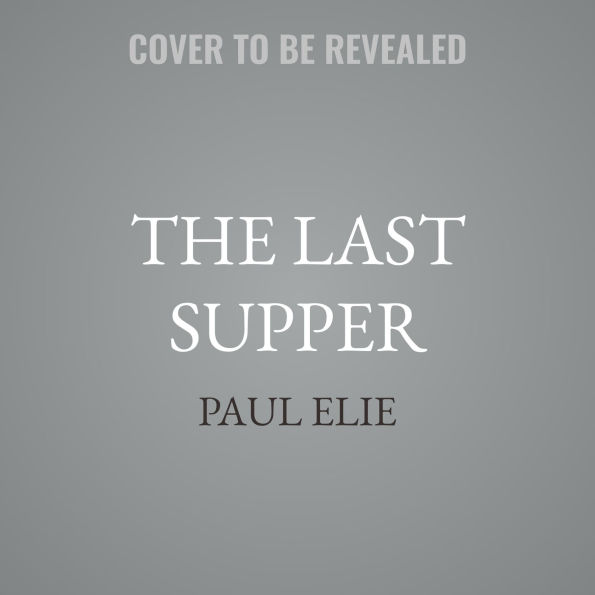Circa 1980, tradition and authority are in the ascendant, both in Catholicism and in American civic life. But the public is deeply divided on issues of body and soul, devotion and desire. Enter the figures Paul Elie calls "cryptoreligious"—Leonard Cohen writing "Hallelujah" on his knees in a Times Square hotel room; Andy Warhol adapting Leonardo's The Last Supper in response to the AIDS pandemic; Prince making the cross and altar into "signs o' the times."
In Elie's acclaimed first book, The Life You Save May Be Your Own, Catholic writers ventured out into the wilds of postwar America; in this book, creative figures who were raised religious go to the margins of conventional belief, calling forth controversy. Episodes such as the boycott sparked by Madonna's "Like a Prayer" video and the tearing-up of Andres Serrano's Piss Christ in Congress are early skirmishes in the culture wars—but here the creators (not the politicians) are the protagonists, and the work they make speaks to conflicts that remain unsettled.
The Last Supper explores the bold and unexpected forms an encounter with belief can take. It traces the beginnings of our postsecular age, in which religion is at once surging and in decline. Through a propulsive narrative, it reveals the cryptoreligious imagination as complex, credible, daring, and vividly recognizable.
1146167784
In Elie's acclaimed first book, The Life You Save May Be Your Own, Catholic writers ventured out into the wilds of postwar America; in this book, creative figures who were raised religious go to the margins of conventional belief, calling forth controversy. Episodes such as the boycott sparked by Madonna's "Like a Prayer" video and the tearing-up of Andres Serrano's Piss Christ in Congress are early skirmishes in the culture wars—but here the creators (not the politicians) are the protagonists, and the work they make speaks to conflicts that remain unsettled.
The Last Supper explores the bold and unexpected forms an encounter with belief can take. It traces the beginnings of our postsecular age, in which religion is at once surging and in decline. Through a propulsive narrative, it reveals the cryptoreligious imagination as complex, credible, daring, and vividly recognizable.
The Last Supper: Art, Faith, Sex, and Controversy in the 1980's
Circa 1980, tradition and authority are in the ascendant, both in Catholicism and in American civic life. But the public is deeply divided on issues of body and soul, devotion and desire. Enter the figures Paul Elie calls "cryptoreligious"—Leonard Cohen writing "Hallelujah" on his knees in a Times Square hotel room; Andy Warhol adapting Leonardo's The Last Supper in response to the AIDS pandemic; Prince making the cross and altar into "signs o' the times."
In Elie's acclaimed first book, The Life You Save May Be Your Own, Catholic writers ventured out into the wilds of postwar America; in this book, creative figures who were raised religious go to the margins of conventional belief, calling forth controversy. Episodes such as the boycott sparked by Madonna's "Like a Prayer" video and the tearing-up of Andres Serrano's Piss Christ in Congress are early skirmishes in the culture wars—but here the creators (not the politicians) are the protagonists, and the work they make speaks to conflicts that remain unsettled.
The Last Supper explores the bold and unexpected forms an encounter with belief can take. It traces the beginnings of our postsecular age, in which religion is at once surging and in decline. Through a propulsive narrative, it reveals the cryptoreligious imagination as complex, credible, daring, and vividly recognizable.
In Elie's acclaimed first book, The Life You Save May Be Your Own, Catholic writers ventured out into the wilds of postwar America; in this book, creative figures who were raised religious go to the margins of conventional belief, calling forth controversy. Episodes such as the boycott sparked by Madonna's "Like a Prayer" video and the tearing-up of Andres Serrano's Piss Christ in Congress are early skirmishes in the culture wars—but here the creators (not the politicians) are the protagonists, and the work they make speaks to conflicts that remain unsettled.
The Last Supper explores the bold and unexpected forms an encounter with belief can take. It traces the beginnings of our postsecular age, in which religion is at once surging and in decline. Through a propulsive narrative, it reveals the cryptoreligious imagination as complex, credible, daring, and vividly recognizable.
45.95
Pre Order
5
1

The Last Supper: Art, Faith, Sex, and Controversy in the 1980's

The Last Supper: Art, Faith, Sex, and Controversy in the 1980's
Audio MP3 on CD(MP3 on CD)
$45.95
45.95
Pre Order

Product Details
| ISBN-13: | 9798228638624 |
|---|---|
| Publisher: | Tantor |
| Publication date: | 08/12/2025 |
| Product dimensions: | 5.30(w) x 7.50(h) x (d) |
| Age Range: | 18 Years |
About the Author
From the B&N Reads Blog
